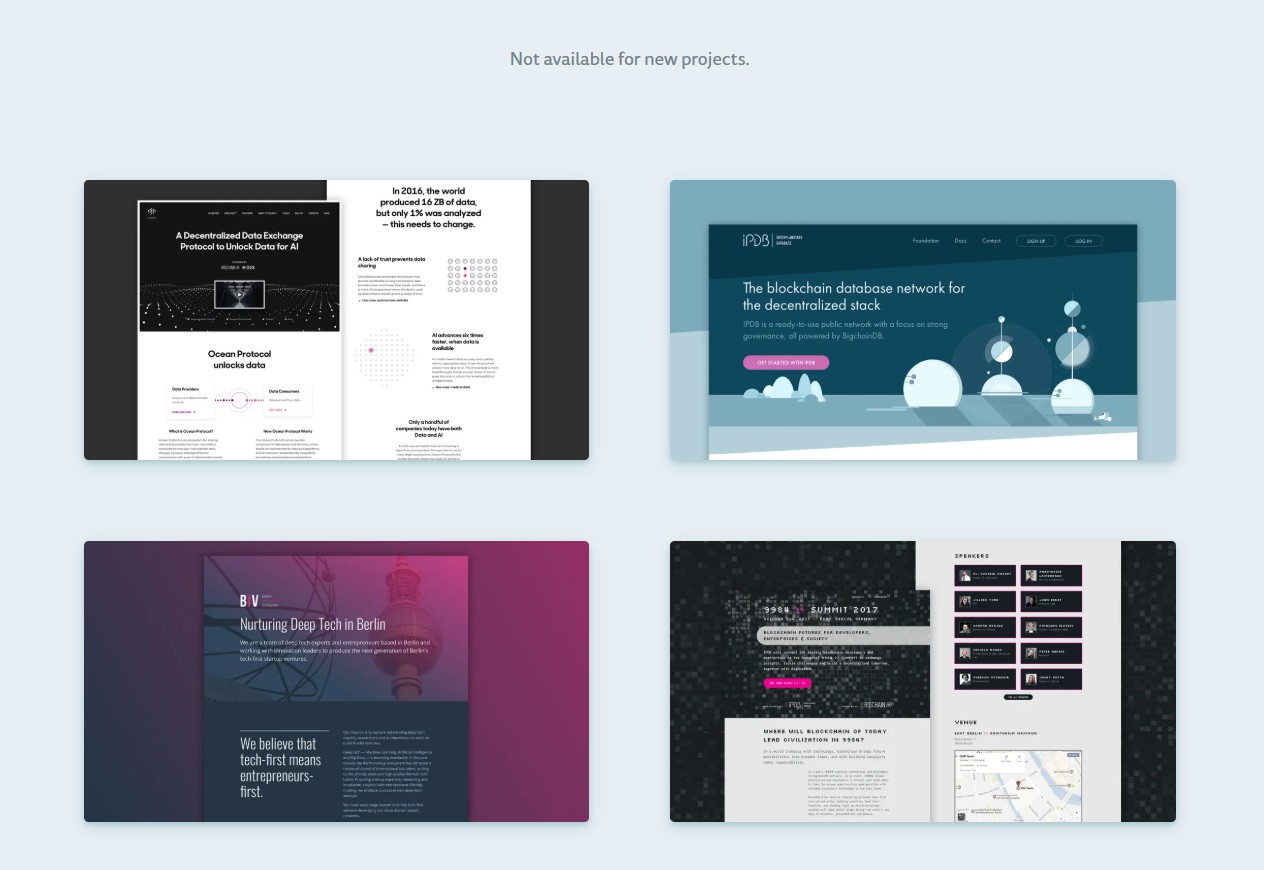portfolio
Portfolio thingy, built with Gatsby.

🎉 Features
The whole portfolio is a React-based Single Page App built with Gatsby v2.
⛵️ Lighthouse score
💍 One data file to rule all pages
All content is powered by one YAML file where all the portfolio's projects are defined. The project description itself is transformed from Markdown written inside the YAML file into HTML on build time.
Gatsby automatically creates pages from each item in that file utilizing the Project.jsx template.
💅 Theme switcher
Includes a theme switcher which allows user to toggle between a light and a dark theme. Switching between them also happens automatically based on user's local sunset and sunrise times. Uses Cloudflare's geo location HTTP header functionality.
If a visitor has set the theme manually that selection is remembered in localStorage, and is restored on next visit.
If you want to know how, have a look at the respective components:
🏆 SEO component
Includes a SEO component which automatically switches all required meta tags for search engines, Twitter Cards, and Facebook OpenGraph tags based on the browsed route/page.
If you want to know how, have a look at the respective component:
📇 Client-side vCard creation
The Add to addressbook link in the footer automatically creates a downloadable vCard file on the client-side, based on data defined in content/meta.yml.
If you want to know how, have a look at the respective component:
💫 Page transitions
Includes mechanism for transitioning between route changes with full page transitions defined with react-pose. Mechanism stolen inspired by gatsby-universal.
If you want to know how, have a look at the respective components:
📈 Matomo (formerly Piwik) analytics tracking
Site sends usage statistics to my own Matomo installation. To make this work in Gatsby, I created and open sourced a plugin, gatsby-plugin-matomo, which is in use on this site.
🖼 Project images
All project images live under content/images and are automatically attached to each project based on the inclusion of the project's slug in their filenames.
All project images make use of the excellent gatsby-image plugin, working in tandem with gatsby-plugin-sharp and gatsby-transformer-sharp.
All together, Gatsby automatically generates all required image sizes for delivering responsible, responsive images to visitors, including lazy loading of all images. Also includes the intersection-observer polyfill to make lazy loading work properly in Safari.
All project images use one single component where one main GraphQL query fragment is defined, which then gets used throughout other GraphQL queries.
💎 Importing SVG assets
All SVG assets under src/images/ will be converted to React components with the help of gatsby-plugin-svgr. Makes use of SVGR so SVG assets can be imported like so:
import { ReactComponent as Logo } from './components/svg/Logo'
return <Logo />
🍬 Typekit component
Includes a component for adding the Typekit snippet.
If you want to know how, have a look at the respective component:
✨ Development
You can simply use Docker & Docker Compose or install and run dependencies on your local system.
git clone [email protected]:kremalicious/portfolio.git
cd portfolio/
# use Docker
docker-compose up
# or go with local system
npm i
npm start
🔮 Linting
ESlint, Prettier, and Stylelint are setup for all linting purposes:
npm run lint
To automatically format all code files:
npm run format
npm run format:css
👩🔬 Testing
Test suite is setup with Jest and react-testing-library.
To run all tests, including all linting tests:
npm test
All test files live beside the respective component. Testing setup, fixtures, and mocks can be found in ./jest.config.js and ./jest folder.
🎈 Add a new project
To add a new project, run the following command. This adds a new item to the top of the projects.yml file, creating the title & slug from the argument:
npm run new -- "Hello"
Then continue modifying the new entry in content/projects.yml.
Finally, add as many images as needed with the file name format and put into content/images/:
SLUG-01.png
SLUG-02.png
SLUG-03.png
...
🚚 Deployment
Automatic deployments are triggered upon successful tests & builds on Travis:
- push to
masterinitiates a live deployment - any Pull Request, and subsequent pushes to it, initiates a beta deployment
The deploy command simply calls the scripts/deploy.sh script, syncing the contents of the public/ folder to S3:
npm run deploy
Upon live deployment, deploy script also purges the Cloudflare cache, and pings search engines. Travis requires the following environment variables to be setup for successful deployments:
AWS_ACCESS_KEY_IDAWS_SECRET_ACCESS_KEYAWS_DEFAULT_REGIONCLOUDFLARE_EMAILCLOUDFLARE_ZONECLOUDFLARE_KEY







